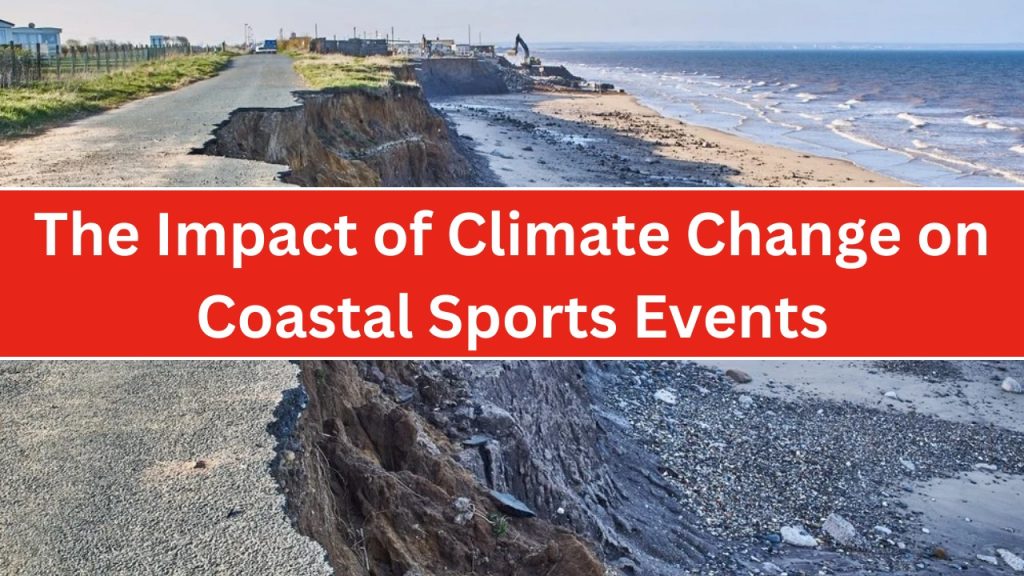
Climate change is one of the biggest environmental challenges of our time. It affects various aspects of life, including sports. Coastal sports events, which take place near the ocean or on beaches, are particularly vulnerable to the impacts of climate change. Rising sea levels, extreme weather conditions, and higher temperatures are changing the way these events are organized and conducted.
Rising Sea Levels and Coastal Erosion
One of the most noticeable effects of climate change is rising sea levels. As the Earth’s temperature increases, glaciers and polar ice caps melt, causing the ocean to expand. This results in flooding and erosion of coastlines, reducing the space available for sports events like beach volleyball, surfing, and coastal marathons. Many famous beaches, which once hosted international sports competitions, are shrinking, making it difficult for organizers to set up proper event venues.
Extreme Weather Events
Coastal sports events are often affected by extreme weather conditions such as hurricanes, storms, and heavy rainfall. These weather changes make it risky to hold events as planned. High winds and strong waves can make water sports like surfing, sailing, and kiteboarding dangerous. Sudden storms can lead to event cancellations, disappointing both athletes and spectators. Additionally, heavy rains can flood playing areas, making it impossible for sports like beach soccer and sand racing to take place.
Higher Temperatures and Health Risks
Rising global temperatures pose health risks for athletes participating in outdoor sports. Many coastal sports require players to spend long hours in the sun. Higher temperatures increase the chances of heat exhaustion, dehydration, and heatstroke. Athletes competing in marathons, triathlons, or long-distance swimming events may find it harder to maintain their performance levels under extreme heat conditions. Additionally, the increase in humidity makes it more difficult for the body to cool down, putting athletes at even greater risk.
Ocean Pollution and Water Quality
Climate change is linked to the increasing pollution of oceans and beaches. Rising temperatures and human activities contribute to the growth of harmful algae, which can make the water unsafe for sports like open-water swimming, surfing, and kayaking. Oil spills, plastic waste, and industrial pollution further deteriorate water quality, making it hazardous for athletes. Poor water conditions can lead to infections, skin irritations, and other health problems, discouraging participation in water-based sports.
Impact on Marine Life and Ecosystems
Coastal sports events often take place in areas that are home to diverse marine life. Climate change affects these ecosystems in multiple ways. Rising ocean temperatures lead to coral bleaching, affecting the natural beauty of underwater diving sites. Changes in fish populations due to warming waters impact fishing competitions. Additionally, increased coastal erosion disrupts the natural habitat of many species, reducing biodiversity. With declining marine health, some locations may no longer be suitable for hosting sports events.
Financial and Economic Consequences
Many coastal communities rely on sports events for tourism and economic growth. International events attract visitors, generating revenue for local businesses, hotels, and restaurants. However, climate change is making it more expensive to host these events. Rising costs for infrastructure repairs, additional safety measures, and emergency planning put financial pressure on organizers. If coastal locations become too risky, sponsors and investors may hesitate to support such events, leading to financial losses.
Adaptation Scenarios
Despite these challenges, there are ways to reduce the impact of climate change on coastal sports events.
- Better Event Planning: Sports organizations can use advanced weather forecasting and climate models to schedule events at the best possible time.
- Improved Infrastructure: Coastal cities can invest in stronger infrastructure to protect sports venues from rising sea levels and storms.
- Environmental Policies: Governments and event organizers can introduce eco-friendly policies to reduce pollution.
- Sustainable Energy Use: Sports events can reduce their carbon footprint by using renewable energy sources like solar and wind power.
- Athlete Awareness and Safety Measures: Educating athletes about the risks of extreme heat and poor water quality can help them prepare better.
- Alternative Locations: In extreme cases, relocating events to safer venues with lower climate risks may be necessary.
The Role of Sports Organizations
International sports bodies like the International Olympic Committee (IOC) and World Surf League (WSL) are taking steps to address climate change. Many organizations are promoting sustainability initiatives, such as carbon-neutral events and eco-friendly sponsorships. By setting environmental standards, they encourage local event organizers to adopt greener practices.
Future Implications
Climate change is significantly impacting coastal sports events by causing rising sea levels, extreme weather, health risks, ocean pollution, and financial losses. However, with proper planning, infrastructure improvements, and sustainable practices, it is possible to reduce these impacts. Coastal sports play an important role in tourism, entertainment, and local economies, making it essential to take action now.



